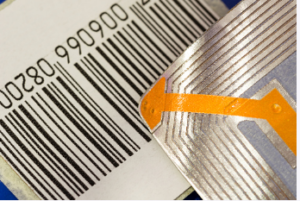RFID tracking technology has seen a renaissance in retail. Companies using the system to monitor inventory levels and trace supply chains in real-time are realising its benefits.
 With RAMPRFID RFID tracking, staff can more quickly and easily scan tagged assets without being directly in their line of sight compared to traditional barcode scanners. It saves both time and effort when scanning barcodes.
With RAMPRFID RFID tracking, staff can more quickly and easily scan tagged assets without being directly in their line of sight compared to traditional barcode scanners. It saves both time and effort when scanning barcodes.
Asset Tracking
RFID technology enables tracking movable assets by connecting RFID tags and readers and optimising systems according to specific use cases by selecting suitable tag types, antenna designs and microchip specifications.
RFID tags differ from barcodes because they can store and transmit data, providing more than location data. It makes assessing asset conditions easier and predicting maintenance needs based on past performance.
Handheld RFID tracking technologies have opened up an unprecedented opportunity to monitor assets more effectively than was ever feasible, improving productivity by decreasing manual labour requirements. Air Canada saved millions annually in food cart replacement costs thanks to RFID tracking while increasing receiving time by 70%!
Passive RFID tags are ideal for tracking high-value items, like tools, machinery, or parts with a special purpose. With RFID tags attached to these assets, workers can easily check out and return equipment and identify the most popular tools among their employees.
RFID’s ability to track large, mobile assets provides retailers enormous potential in omnichannel retail applications. For instance, retailers could utilise an RFID tracking system as part of online sales channels to offer click-and-collect services – increasing customer satisfaction while driving up revenue by making it quicker for their customers to collect their purchases quickly.
Inventory Tracking
RAMPRFID RFID tracking offers businesses an efficient and transparent means to improve stock management and gain visibility of incoming products, in-process orders, shipped goods and returns. Since RFID tags don’t require direct line-of-sight scanning like barcodes, do, they can be read from any angle without delay and help eliminate human errors that slow inventory processing – like scanning an incorrect item or missing an entry.
RFID for inventory tracking also helps warehouse personnel save time when performing tasks like counting and packing items for shipping. RFID’s high-performance, intelligent scanner can complete this process much more quickly.
Real-time inventory tracking makes it possible to instantly identify when an operator has placed goods away in an incorrect location, whether through scanning RFID tags or using directionality (based on comparing outputs from multiple reader antennas to determine the distance travelled by items tagged). Automating updates when goods move from one staging area to another, such as quality hold or repair area, helps minimise labour costs, while companies can also automate replenishing safety stock levels by setting thresholds within ERP software that trigger replenishment orders when quantities decline.
Security Tracking
RFID, the wireless technology that has made RFID inventory tracking popular, also brings significant security benefits. By using RFID tags for inventory tracking purposes and monitoring staff movements, RFID helps eliminate lost equipment or theft risks and monitor staff movements to prevent unauthorised or accidental access to sensitive materials.
RFID tracking’s automated nature can increase productivity by freeing up human resources to focus on higher-priority work. For instance, using software to handle low-priority tracking needs allows security teams to focus on monitoring only those most vulnerable to attacks.
Software-driven personnel tracking provides detailed performance metrics invaluable in supporting compliance efforts, while traditional manual methods often produce inaccurate or incomplete data due to miscommunication and mishaps.
Event Tracking
RFID technology can make events more effective, safe, and enjoyable for attendees by streamlining ticketing processes, access controls, or crowd management and helping lower costs and increase ROI.
RFID readers detect tags via radio waves and convert the resulting signal into an electronic readout. Users can program this device to create specific responses – for instance, turning on LED lights or sending data signals – for each tag they encounter.
Attendee tracking allows event organisers to monitor the flow of people on an exhibition floor and adjust security or staffing as necessary. For instance, if one booth receives more traffic than expected, organisers can redirect these individuals elsewhere within the event to reduce congestion and ensure everyone has an enjoyable experience.
RFID can also be utilised as a cashless payment system at events by giving event attendees RFID wristbands or bands to purchase food and drinks on-site without waiting in line or processing cash transactions onsite – thus significantly decreasing transaction times and cutting back transaction queues.